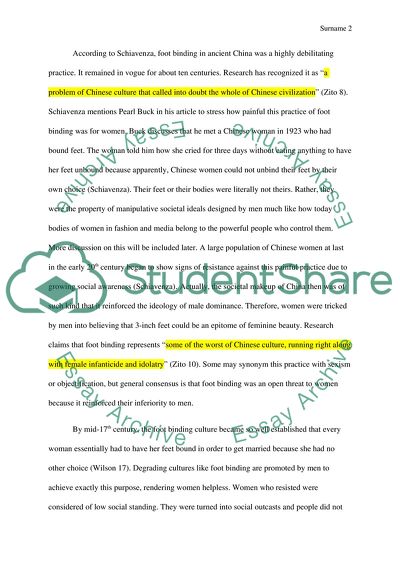Cite this document
(The Peculiar History of Foot Binding in China Research Paper - 2, n.d.)
The Peculiar History of Foot Binding in China Research Paper - 2. Retrieved from https://studentshare.org/gender-sexual-studies/1852797-final
The Peculiar History of Foot Binding in China Research Paper - 2. Retrieved from https://studentshare.org/gender-sexual-studies/1852797-final
(The Peculiar History of Foot Binding in China Research Paper - 2)
The Peculiar History of Foot Binding in China Research Paper - 2. https://studentshare.org/gender-sexual-studies/1852797-final.
The Peculiar History of Foot Binding in China Research Paper - 2. https://studentshare.org/gender-sexual-studies/1852797-final.
“The Peculiar History of Foot Binding in China Research Paper - 2”. https://studentshare.org/gender-sexual-studies/1852797-final.


